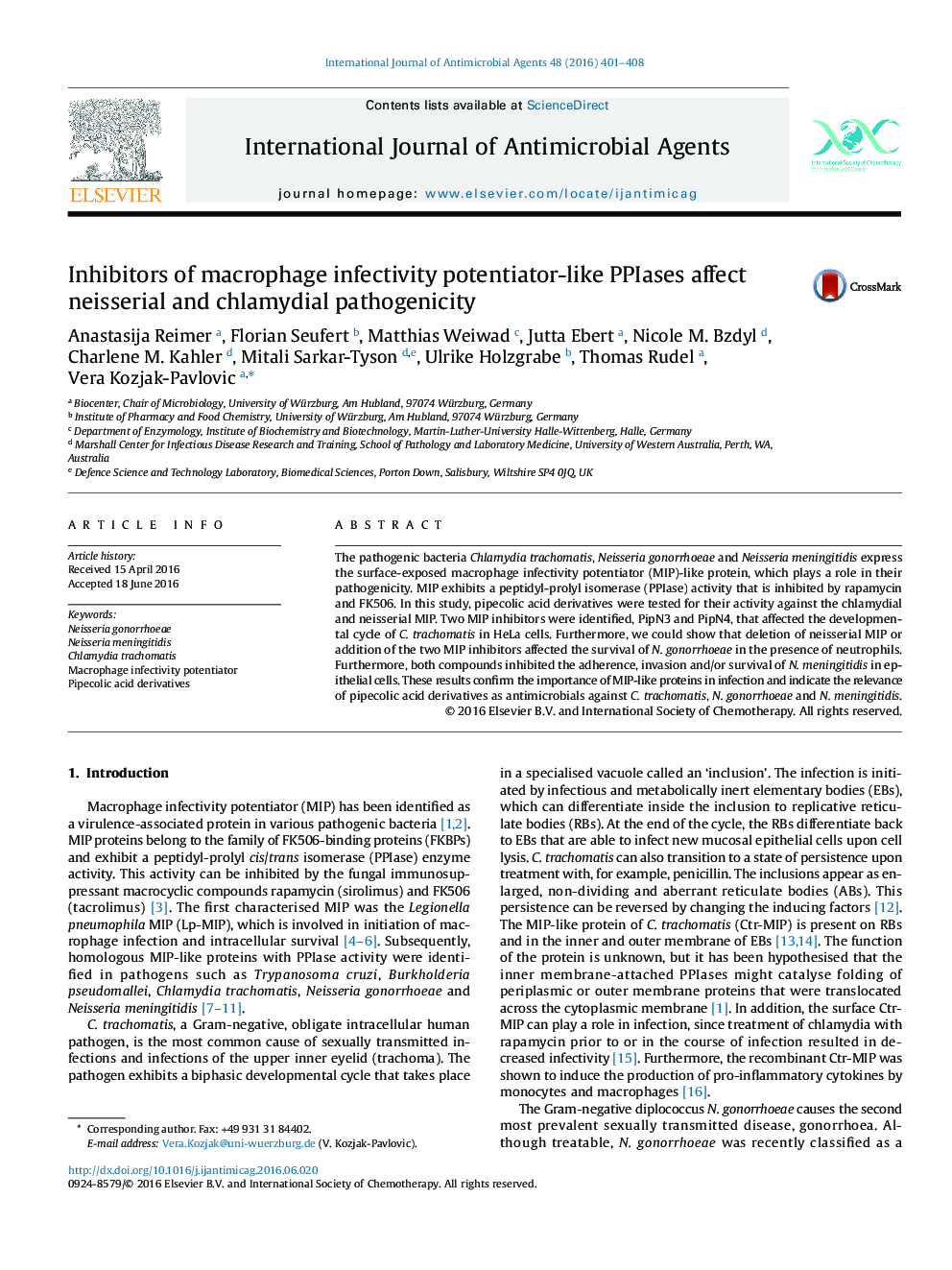| Article ID | Journal | Published Year | Pages | File Type |
|---|---|---|---|---|
| 3358375 | International Journal of Antimicrobial Agents | 2016 | 8 Pages |
Abstract
The pathogenic bacteria Chlamydia trachomatis, Neisseria gonorrhoeae and Neisseria meningitidis express the surface-exposed macrophage infectivity potentiator (MIP)-like protein, which plays a role in their pathogenicity. MIP exhibits a peptidyl-prolyl isomerase (PPIase) activity that is inhibited by rapamycin and FK506. In this study, pipecolic acid derivatives were tested for their activity against the chlamydial and neisserial MIP. Two MIP inhibitors were identified, PipN3 and PipN4, that affected the developmental cycle of C. trachomatis in HeLa cells. Furthermore, we could show that deletion of neisserial MIP or addition of the two MIP inhibitors affected the survival of N. gonorrhoeae in the presence of neutrophils. Furthermore, both compounds inhibited the adherence, invasion and/or survival of N. meningitidis in epithelial cells. These results confirm the importance of MIP-like proteins in infection and indicate the relevance of pipecolic acid derivatives as antimicrobials against C. trachomatis, N. gonorrhoeae and N. meningitidis.
Keywords
Related Topics
Life Sciences
Immunology and Microbiology
Applied Microbiology and Biotechnology
Authors
Anastasija Reimer, Florian Seufert, Matthias Weiwad, Jutta Ebert, Nicole M. Bzdyl, Charlene M. Kahler, Mitali Sarkar-Tyson, Ulrike Holzgrabe, Thomas Rudel, Vera Kozjak-Pavlovic,
